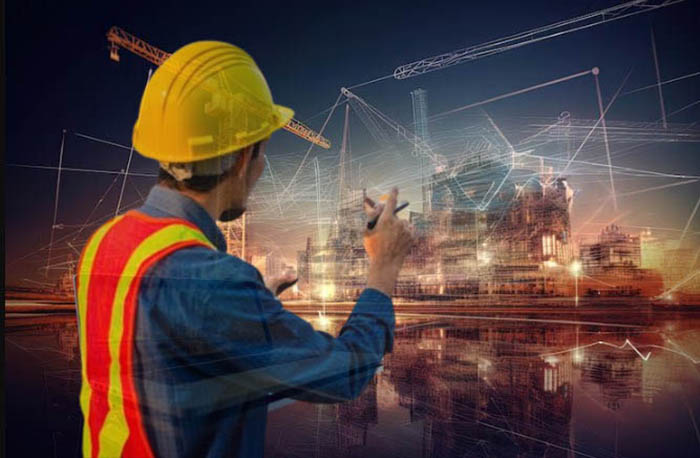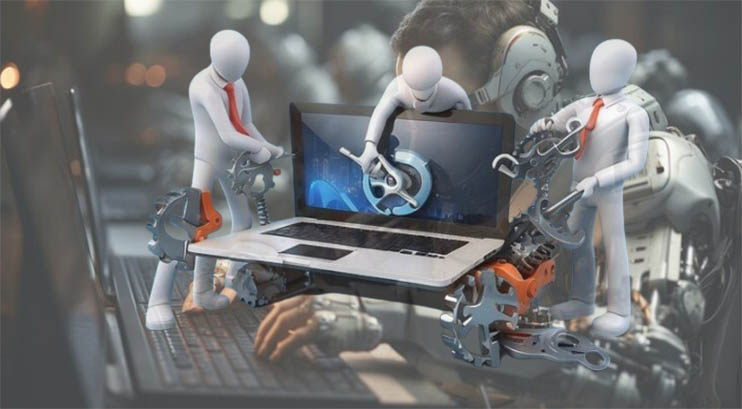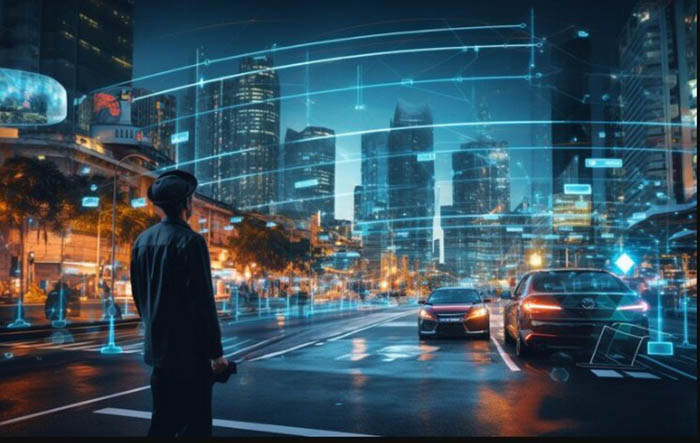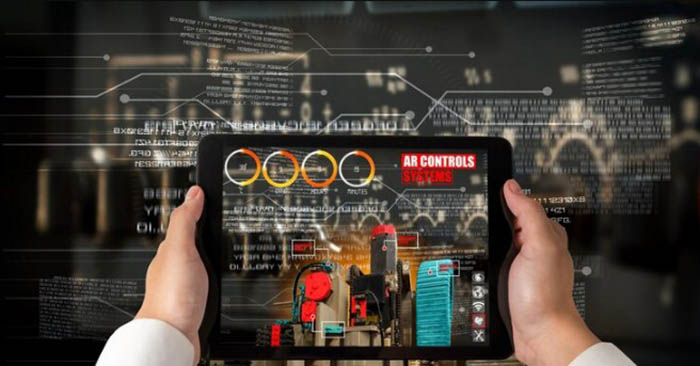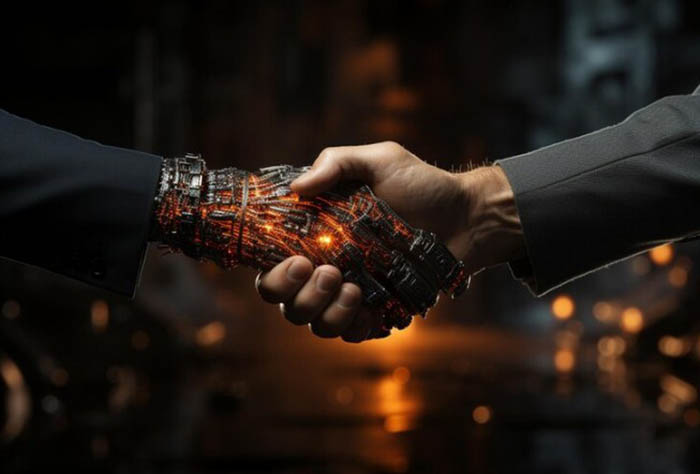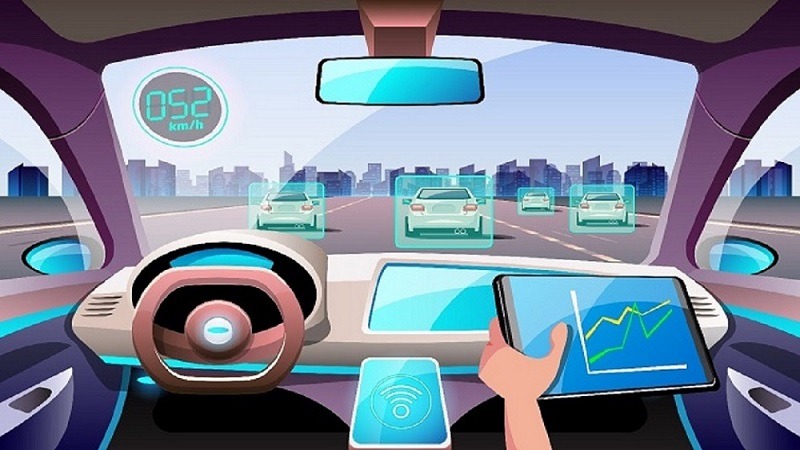AI for Public Works Management
Ever wondered what makes a city run smoothly? The secret could be artificial intelligence or AI for short.
Let us look at how AI is changing the game in managing public works, helping everything work better and smarter.
1 Planning New Infrastructure Projects
AI Weighs Multiple Factors
Choosing the best location that meets access, space, and environmental needs is important.
Agencies must assess potential impacts on communities, habitats, and existing systems.
Determining the optimal design specifications for long-term functionality is another key consideration.
AI systems excel at processing and analyzing huge amounts of data related to all these factors.
AI for public infrastructure empowers cities to adapt to changing needs and challenges more effectively.
They can run advanced simulations and models to evaluate different scenarios. This allows agencies to make more informed decisions during the planning phase.
Mapping out Infrastructure Routes
For example, AI can map out multiple potential routes for a new highway or railway line.
It factors in data about costs, terrain, population density, environmental impacts, and more. The AI highlights the most suitable route options for human planners to consider. AI for public infrastructure helps predict and mitigate potential risks and disruptions.
2 Construction Monitoring
Keeping an AI Eye on Build Sites
Once an infrastructure project’s design is approved and construction begins, it’s crucial to monitor the process rigorously.
AI in Infrastructure Management is revolutionizing how public works are planned and executed, making them more efficient and cost-effective. The integration of advanced AI systems can also play a vital role in the building materials industry transformation, as it helps manage the use of materials and monitors progress.
Delays, errors, or safety lapses can prove extremely costly. Traditionally this monitoring relied on human inspectors and supervisors, which can be inconsistent, time-consuming, and limited in scope.
AI-powered monitoring systems are transforming construction oversight.
Networks of cameras, sensors, and other Internet of Things (IoT) devices feed a constant stream of data to AI analytics platforms.
With AI in Infrastructure Management, cities can better predict and prevent traffic congestion and utility failures.
The AI can automatically detect any deviations from the project plans and specs in real-time.
AI Alerts for Site Issues
It can alert supervisors to a variety of potential issues, such as:
- Construction equipment or materials being used incorrectly
- Work happening in unauthorized locations
- Signs that the project may face delays based on progress rates
- Unsafe practices that could lead to accidents or injuries
3 Maintenance and Repair
Extending Infrastructure Lifespan
Our roads, bridges, and utilities must be properly maintained. Doing this keeps everyone safe and helps avoid big repair costs later on.
If we don’t take care of these things, they can get worse over time and might even cause serious problems.
However, manually inspecting every mile of road, pipeline, cable line, etc. is extremely labor-intensive.
Human inspections also tend to be infrequent and may miss developing flaws. AI offers powerful tools for automating continuous infrastructure monitoring.
Traffic management systems rely on AI in Infrastructure Management to optimize traffic flow and reduce congestion on roads and highways.
AI-Powered Inspection Vehicles
Specially equipped drones or vehicles with sensor payloads can scan roads, rails, and other infrastructure components.
The AI imaging analysis software can automatically detect cracks, degradation, corrosion, and other developing flaws that human inspectors might miss.
AI systems can also prioritize and schedule maintenance based on the severity of the issues found.
Additionally, predictive AI models can estimate when different system components will likely require replacement based on usage patterns and environmental factors.
Public engagement becomes essential in harnessing the full potential of the AI effect on infrastructure, ensuring that AI solutions companies align with community values and needs.
4 Optimizing Utilities
The Circulatory Systems of Modern Life
Utilities like electricity grids, water systems, telecommunications networks, and sewer lines are the circulatory systems that enable modern infrastructure and daily life to function.
Balancing supply and demand in real-time across these sprawling utility networks is an incredible feat of engineering and logistics.
Even minor inefficiencies get amplified across nationwide scales.
AI and machine learning techniques are revolutionizing how utility companies optimize their operations for reliability, efficiency, and sustainability.
By crunching massive datasets on usage patterns, AI can automatically coordinate intelligent responses.
The AI effect on infrastructure is revolutionizing how cities manage public works projects, making them more efficient and cost-effective.
AI for Smarter Power Grids
For electricity grids, AI-powered smart grid management is reducing energy waste and preventing outages:
- AI systems dynamically route electricity from suppliers to consumers along the most efficient paths, minimizing line losses
- AI models predict demand patterns and load balance proactively across the grid
- Distributed renewable energy sources like solar and wind are integrated intelligently
Streamlining Water & Telecom Networks
For water utilities, AI-controlled pumps, valves, filters, and other components reduce leaks, and blockages, and minimize treatment chemical usage through smart monitoring and predictive maintenance.
In telecommunications, AI monitors networks and reroutes bandwidth dynamically to prevent outages or lag during peak demand periods.
Self-optimizing AI helps telecom providers maximize the value of their infrastructure investments.
5 Improving Traffic Management
AI Optimizes Traffic Light Timing
One way AI can help mitigate traffic is by optimizing traffic light patterns.
Systems feed live traffic data into AI algorithms that can dynamically adjust light timing at intersections to keep vehicles moving smoothly.
The AI factors in real-time conditions like travel volumes, pedestrian crossings, construction zones, and accidents.
Predicting and Routing Around Congestion
Another application of AI for traffic management is predictive modeling and route guidance.
Using historical data combined with live inputs like accidents, events, or road closures, AI can forecast traffic conditions and identify potential bottlenecks before they occur.
The AI system can then suggest alternate routes, speed limits, lane adjustments, and other tactics to disperse traffic proactively.
In-vehicle GPS systems and mobile apps can provide these AI-recommended routes directly to drivers.
6 Disaster Response & Resilience
Predictive Modeling for Disaster Preparation
One key way AI assists is through predictive risk modeling and scenario planning.
AI algorithms can process meteorological data, geographic information, infrastructure schematics, and other datasets to forecast the potential severity and impacts of an approaching hurricane, wildfire risk, or other disasters.
Agencies can use the AI’s predictions to proactively position emergency resources, and initiate protective measures like sandbag deployment or setting up evacuation routes. They can also run simulations planning for disaster infrastructure recovery efforts.
AI-Powered Damage Assessments
After a disastrous event, safely inspecting the full extent of damage to infrastructure is a priority for repair crews.
AI systems using drone video, satellite imagery, and other remote sensing data can rapidly assess damage across a wide region.
The AI automatically identifies specific types of damage – such as downed power lines, compromised bridges, and flooded roads.
This information provided in damage assessment maps helps agencies prioritize recovery efforts and dispatch crews efficiently.
7 Sustainable & Resilient Design

AI technology is being leveraged to model future risks and stressors, and then optimize designs to withstand or adapt to them over decades of use.
The goal is to create infrastructure systems that provide lasting value while minimizing resource consumption and environmental impact.
AI-Guided Resilient Engineering
For example, AI can analyze projections on sea level rise, storm surge potentials, and soil erosion data to guide site planning and engineering for sustainable shoreline protection projects.
The AI factors in conditions decades into the future to ensure sea walls, drainage systems, and other coastal defenses will remain effective.
Similarly, AI simulations can test the long-term resilience of bridges, dams, and levees against seismic risks, extreme wind loads, and other hazards exacerbated by a changing climate.
The insights allow reinforcing designs proactively instead of reactive retrofitting later.
Modeling Community Growth
AI is not only beneficial for designing resilient physical infrastructure assets but also for modeling future community needs.
As urban populations grow and shift, civil planners can use AI to forecast demands and design infrastructure accordingly.
By ingesting data on demographic, economic, and software development trends, the AI can highlight potential capacity shortages for transportation systems, utilities, public services, and housing needs down the line.
Designs for expansions or new construction can then prioritize those high-growth areas.
8 Deep Learning for Civil Engineering
Training AI on Engineering Data
While artificial intelligence offers incredible capabilities for infrastructure management, training accurate AI models tailored for civil engineering domains remains a significant challenge.
Modern systems rely on machine learning techniques that require vast, high-quality training datasets.
Engineers and researchers globally are working to compile detailed datasets covering all facets of infrastructure – from structural mechanics and materials science to traffic patterns, soil analysis, meteorological conditions, and more.
These labeled datasets become the foundational knowledge that deep learning AI models can build.
Deep learning AI is accelerating innovation in infrastructure design, furthering the AI effect on infrastructure advancement.
Custom AI for Complex Engineering Tasks
Using these civil-engineering-specific training datasets, AI companies and public agencies are developing custom AI solutions tailored for complex infrastructure design, simulation, and analysis tasks that have traditionally relied on manual processes.
For example, AI systems are being trained on bridge construction site imagery and technical data to automatically detect defects, quality control issues, or specification violations as structures are being built.
This automated AI monitoring could reinforce safety and prevent future maintenance problems.
Similarly, AI models trained on soil dynamics data are proving valuable for assessing potential impacts during construction projects like tunneling or excavations.
The AI simulations help engineers choose methods that mitigate ground movement and risks to surrounding infrastructure.
Accelerating Innovation
Beyond monitoring and analysis, researchers are also exploring how deep learning AI can innovate new solutions for infrastructure challenges.
- By ingesting massive datasets spanning material properties, structural designs, physics simulations, and real-world case studies, the AI may discover new potential design approaches or materials that human engineers have not conceived.
- While still an emerging field with many open questions, deep learning AI could potentially accelerate the rate of infrastructure innovation by augmenting human ingenuity with its analytical power.
- As training data increases and model accuracy improves over time, AI may become indispensable for engineering the resilient infrastructure systems of the future.
- Public agencies continue investing in academic-industry-government collaborations to develop deep-learning AI applications for engineered systems.
- Organizations like the National Science Foundation are prioritizing these cross-disciplinary initiatives to advance AI for infrastructure and construction challenges.
9 Stakeholder Engagement and Public Acceptance
Collaborating with Communities
While AI technology promises many benefits for public infrastructure development and operations, its use by government agencies also raises social concerns around privacy, transparency, and public engagement.
Ultimately, infrastructure exists to serve the needs of communities.
As powerful as AI decision-support tools may become, agencies should ensure they don’t simply impose top-down technology solutions without substantive stakeholder input or accountability.
There must be processes enabling impacted communities to understand how AI will be applied and have their voices heard in planning processes.
Interpretable AI Builds Trust
Skepticism and mistrust can arise when AI systems are perceived as inscrutable “black boxes” making critical infrastructure decisions.
Responsible agencies are working to develop AI solutions prioritizing interpretability – where the AI’s decision-making processes can be clearly explained and aligned with community values.
Conclusion
AI is changing the way we organize, create, and take care of our city’s systems, making our towns smarter and working better than in the past.
It helps control traffic well and foresees big weather changes, changing how public services are run in many ways.
Thinking about the future, how do you see AI keep changing our community’s systems and cities?
What are your thoughts on how AI could make managing public services even better in your area? Share your thoughts with us below!
FAQs
1) How does AI help with infrastructure planning?
AI can process many different data sources like costs, maps, and environmental factors. It uses this information to model and evaluate various infrastructure design options efficiently.
2) What is an example of AI for construction monitoring?
Camera and sensor systems feed video data to the AI software. The AI can automatically detect issues like equipment misuse, unauthorized actions, or potential safety risks.
3) How do AI systems optimize utility networks?
AI coordinates energy flow, water distribution, telecommunications bandwidth and more based on usage demands and supply levels across the utility network to reduce waste.
4) Why is public engagement important for infrastructure AI?
Communities should understand how AI technology will impact infrastructure projects. Their input ensures AI solutions align with public values around sustainability, equity, and development goals.


